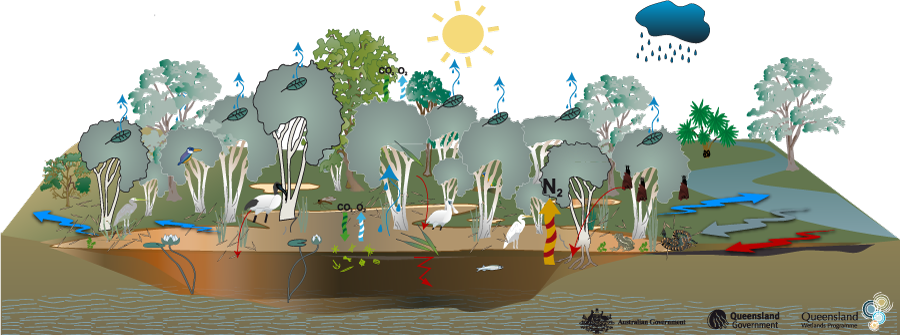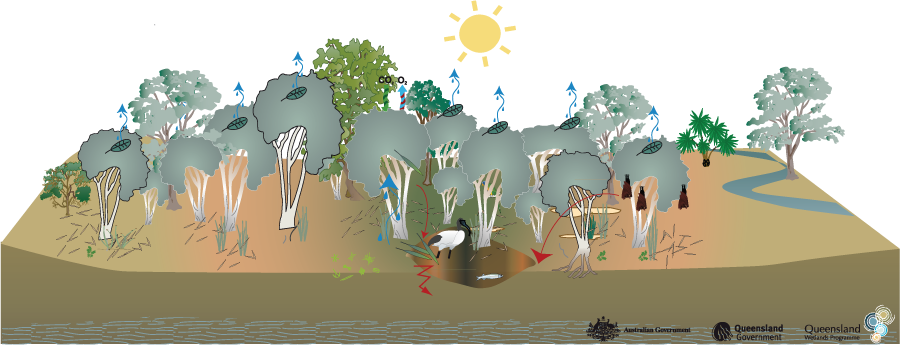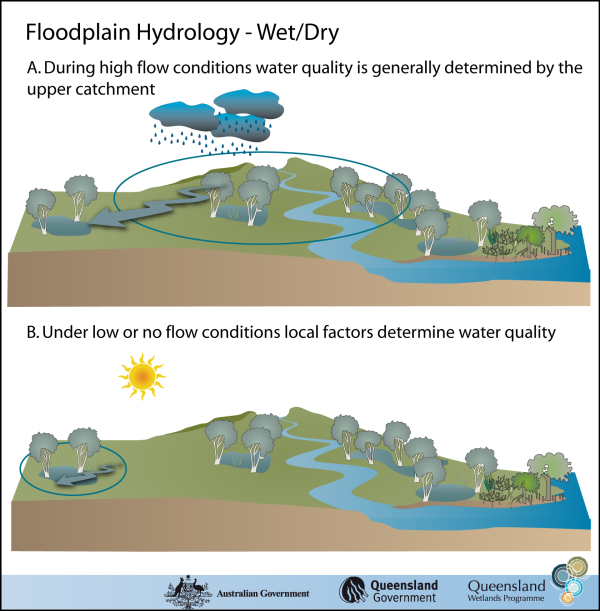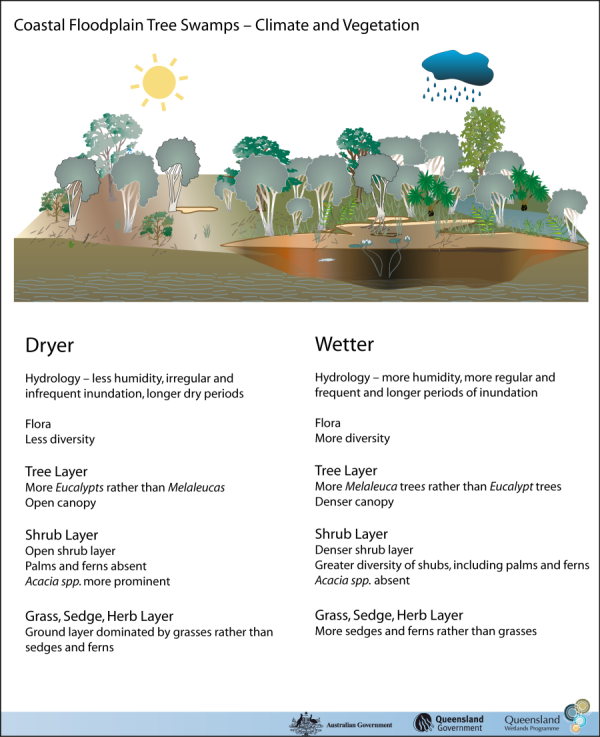|
|
Coastal and subcoastal floodplain tree swamp–Melaleuca spp. and Eucalyptus spp.Coastal and subcoastal floodplain tree swamp–Melaleuca spp. and Eucalyptus spp. – FloraClick on elements of the model or select from the tabs below
The dominant coastal floodplain tree swamp regional ecosystems contain Melaleuca saligna ± M. viridiflora, Lophostemon suaveolens woodland, Melaleuca quinquenervia open forest on coastal alluvial plains and Melaleuca quinquenervia, Eucalyptus tereticornis, Lophostemon suaveolens woodland. Coastal floodplain tree swamps can also be a fringing woodland community, commonly containing Eucalyptus camaldulensis or E. coolabah but also a wide range of other species including Eucalyptus platyphylla, E. tereticornis, Melaleuca spp., Acacia holosericea or other Acacia spp. These can be associated with open water aquatics and emergents such as Potamogeton crispus, Myriophyllum verrucosum, Chara spp., Nitella spp., Nymphaea violacea, Ottelia ovalifolia, Nymphoides indica, N. crenata, Potamogeton tricarinatus, Cyperus difformis, Vallisneria caulescens and Hydrilla verticillata (see Aquatic Habitat). Melaleuca spp. can form almost pure stands and therefore floristic diversity is not necessarily a function of health in these systems. On flat land with good subsoil moisture, Melaleuca spp. can occur alongside eucalypts in mixed tall open-forests. Other flora types (depending on the swamp’s positions within the landscape and its water regimes) include cabbage tree palms, swamp box, bloodwoods, sedges, rushes, reeds, grasses and ferns. Different Melaleuca species are associated with slightly different soil types and water regimes conditions —flora diversity with climate pop out. Research suggests that the growth of Melaleuca quinquenervia can have a significant effect on the local soil chemistry and groundwater, increasing acidity (decreasing pH), changing redox potential and dissolved organic carbon levels. Though Melaleuca spp. trees cannot survive permanent inundation, they do have adaptations such as fibrous or adventitious roots around their lower trunk that are thought to function as breathing roots, helping the tree to survive during long periods of submersion. The trees also have spreading root systems, providing stability during floods and prolonged water logging, and most species are tolerant to a limited extent of both saline and brackish water.
Last updated: 22 March 2013 This page should be cited as: Department of Environment, Science and Innovation, Queensland (2013) Coastal and subcoastal floodplain tree swamp–Melaleuca spp. and Eucalyptus spp. – Flora, WetlandInfo website, accessed 8 May 2025. Available at: https://wetlandinfo.des.qld.gov.au/wetlands/ecology/aquatic-ecosystems-natural/palustrine/floodplain-tree-swamp/flora.html |

 — Department of the Environment, Tourism, Science and Innovation
— Department of the Environment, Tourism, Science and Innovation






